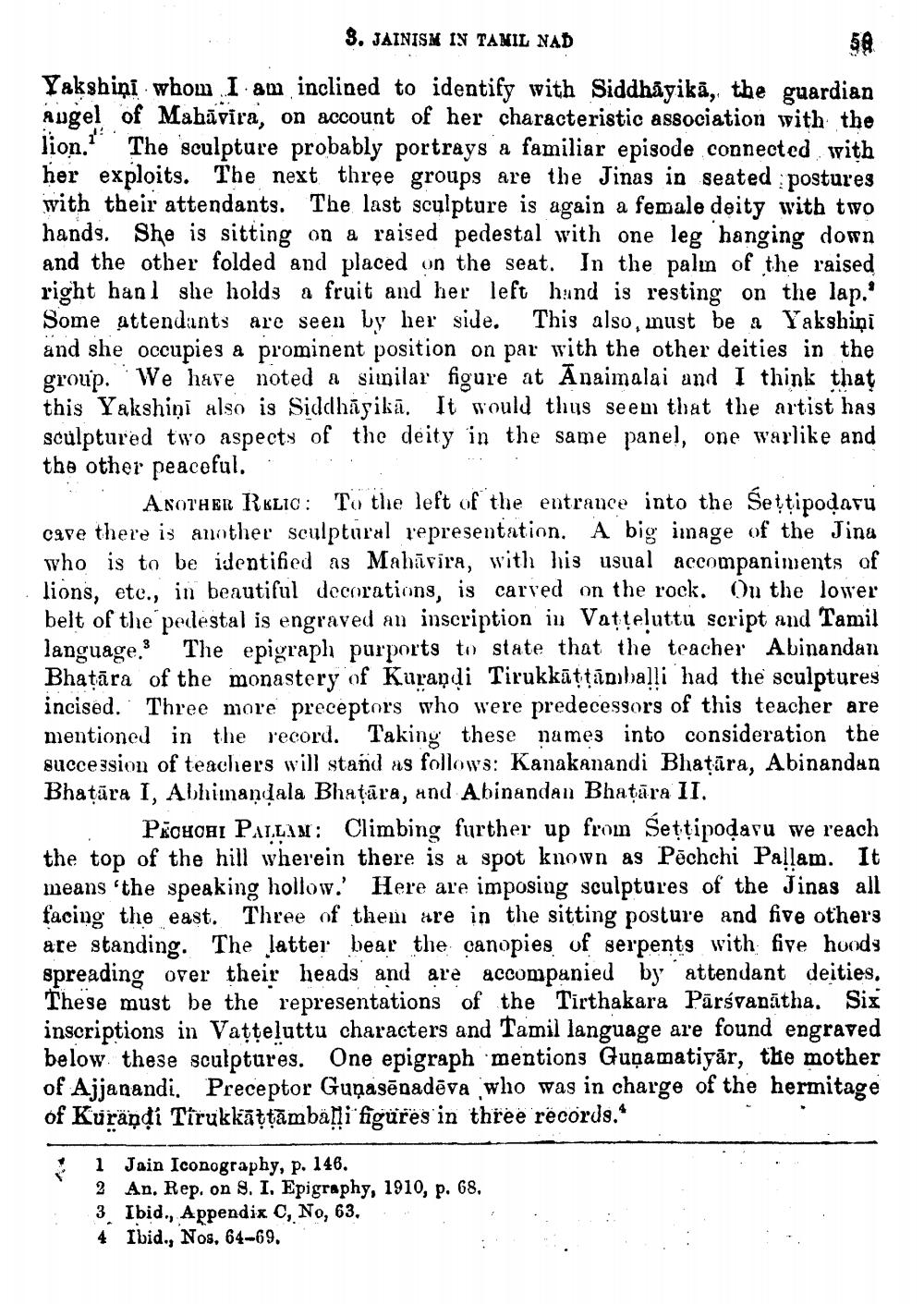________________
8. JAINISM IN TAMIL NAD
59
Yakshini whom I am inclined to identify with Siddhayika, the guardian angel of Mahavira, on account of her characteristic association with the lion. The sculpture probably portrays a familiar episode connected with her exploits. The next three groups are the Jinas in seated postures with their attendants. The last sculpture is again a female deity with two hands. She is sitting on a raised pedestal with one leg hanging down and the other folded and placed on the seat. In the palm of the raised right han she holds a fruit and her left hand is resting on the lap.' Some attendants are seen by her side. This also, must be a Yakshini and she occupies a prominent position on par with the other deities in the group. We have noted a similar figure at Anaimalai and I think that this Yakshini also is Siddhayika. It would thus seem that the artist has sculptured two aspects of the deity in the same panel, one warlike and the other peaceful.
ANOTHER RELIC: To the left of the entrance into the Settipoḍavu cave there is another sculptural representation. A big image of the Jina who is to be identified as Mahavira, with his usual accompaniments of lions, etc., in beautiful decorations, is carved on the rock. On the lower belt of the pedestal is engraved an inscription in Vatteluttu script and Tamil language.3 The epigraph purports to state that the teacher Abinandan Bhatara of the monastery of Kurandi Tirukkaṭṭamballi had the sculptures incised. Three more preceptors who were predecessors of this teacher are mentioned in the record. Taking these names into consideration the succession of teachers will stand as follows: Kanakanandi Bhaṭāra, Abinandan Bhatara I, Abhimandala Bhatara, and Abinandan Bhatara II.
PACHCHI PALLAM: Climbing further up from Settipoḍavu we reach the top of the hill wherein there is a spot known as Pechchi Pallam. It means 'the speaking hollow.' Here are imposing sculptures of the Jinas all facing the east. Three of them are in the sitting posture and five others are standing. The latter bear the canopies of serpents with five hoods spreading over their heads and are accompanied by attendant deities. These must be the representations of the Tirthakara Parsvanatha. Six inscriptions in Vatteluttu characters and Tamil language are found engraved below these sculptures. One epigraph mentions Gunamatiyar, the mother of Ajjanandi. Preceptor Gunasenadeva who was in charge of the hermitage of Kurandi Tirukkaṭṭamballi figures in three records.*
1 Jain Iconography, p. 146.
2 An. Rep. on S. I. Epigraphy, 1910, p. 68.
3 Ibid., Appendix C, No, 63.
4 Ibid., Nos, 64-69.




